In Jenna Westra’s photographs, women straddle the camera. They pose upright and proud or twist with ease. Some greet her lens with their hairy legs, while others sprawl out in the style of a renaissance nude — porcelain skin, soft curves and naked breasts covered unsuccessfully by the white cotton trousers of another woman. “I’m interested in the ways in which the female body can project a sensuality, sexuality or confidence without being erotic,” says the artist, of the images in her new book Afternoons. The photographs are currently exhibited at Lubov NYC. “So many depictions of the nude female body both historic and contemporary are about objectification or an invitation to consume and control.”
Her subjects are dancers, writers, art historians, yoga instructors, photographers, waitresses, designers, students and herself — shot either naked or wearing leotards, tights or outfits in muted tones. No matter their profession and identity, movement comes naturally to these women. They have a close connection to their physicality, are comfortable being in front of the camera and understand the nuances of what Jenna is trying to do. “I don’t think a man could make this work,” she says. “There is a tenderness and understanding between myself and my subjects that just couldn’t exist if the gender roles were different.”

Jenna plans out her shoots, making small sketches and notations of a scene or interaction that she then describes to the models. A careful approach that, in many ways, is inspired by the structure of postmodernist choreography — a school of dance that originated in New York in the early 60s that blurred the lines between visual art and traditional dance. They deconstructed and democratised dance by placing professional and untrained dancers beside each other and by removing the pageantry of costumes and makeup.
Emerging alongside Second-wave feminism, postmodern dance championed women, searching for new ways for them to move through space. “Their work is a reminder, as we live through our own reckoning surrounding the control and mistreatment of women’s bodies, of the ongoing validity of that search,” wrote Kate Guadagnino in The New York Times Magazine last year. Jenna is drawn to the work because of the way the camera changes a performance: “I question why a particular angle was chosen to represent the work and if the performers reoriented themselves because of the camera’s presence.”
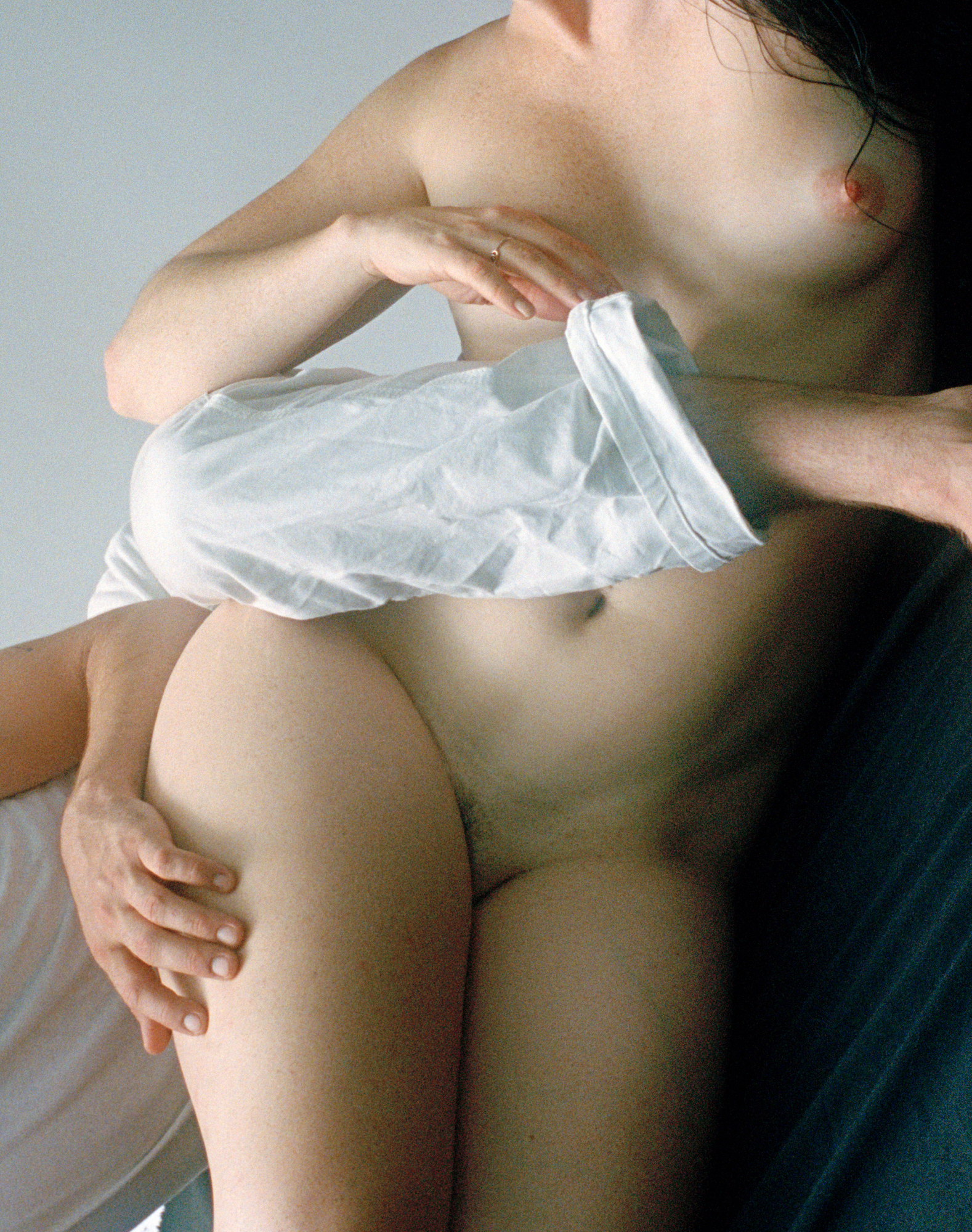
She embraces the absurd like the pioneers of postmodern dance, playing with suggestiveness, not with the women, but through her placement of objects around them. An image of a woman wearing only a pair of nude-coloured tights, her long black hair acting as a cloak, sits beside a cherry and a glass of water, which another person dips two fingers into. “I was thinking about relocating that objectification away from the person and towards the glass and cherry,” she says.
But when it comes to compositions, which are usually cropped prints from her negatives — always leaving something beyond the frame — she looks to film stills from French New Wave Cinema, often pausing a film when watching it to study compositions in the in-between moments. Her black and white images of women with dark hair and bangs are stylistically inspired by these films — her subjects moving through a scene in an active way rather than performing or acting, just like the powerful women protagonists in Jean-Luc Godard’s films.
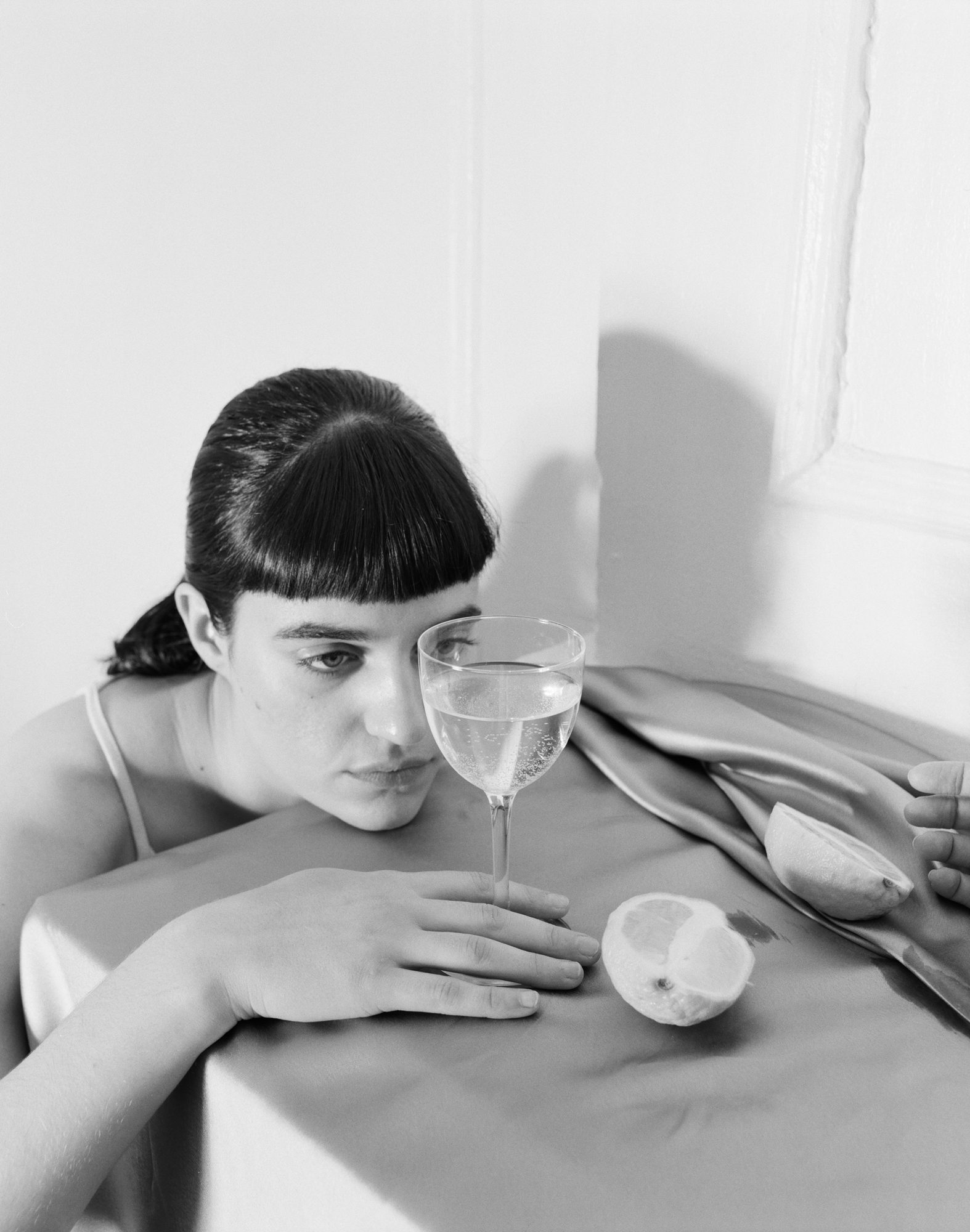
Jenna shoots on an analog camera, which she enjoys for its physicality, its fragility and the way it limits her on set. Film is expensive and it’s a slower process, making her consider her frame more before releasing the camera’s shutter. Jenna loves spending time in the darkroom — “her sanctuary” — she says, “there’s nothing like seeing the image appear on the latent paper in liquid under red light, it never gets old and is completely romantic.”
Jenna is an entirely self-taught photographer, entering the medium by playing around with self-portraiture as a way to figure out her own identity. She was drawn to the ways the female form translates on film, eventually substituting herself out for other women. Although initially resistant to depicting faces, which she thought would mean the work would be about that person and less about her considerations, the photographer’s work has since developed to include the identity of her subjects. “Now I understand the power of attitude within form,” she says.

In Afternoons, titled for the period of the day that the artist is most productive, there’s something piercing, yet soft about the expressions on her subject’s faces. They’re vulnerable and melancholy but at the same time empowered, wholesome and content, completely at peace with their bodies and themselves. There is an ambiguous quality to the photographs, taken against a simple backdrop that focuses the attention on the women rather than the time and place.
“I would like to think there’s a poetic quality [to my work],” Jenna says. “A certain graphic-ness, maybe something perplexing or not fully understandable. The art I like most does not reveal itself all at once, but unfolds over time.” Tension is important to the photographer, who aims to capture the unexpected. A certain sense of anxiety, but also a formalism and beauty.

“Unfortunately society has decided that breasts equal sex, and that’s not real,” she says. “We’re not making these images as a tabula rasa for the projection of male desire.” That means she’s careful with what the models wear — it needs to be comfortable, easy to move in and avoid lingerie-type clothing that signifies that type of sexuality. She also thinks about what poses and facial expressions exude power and being at ease with one’s body.
“I’m reacting against the assumption that images of nude women are solely for male consumption and presenting a reality where normal expectations of desire are broken,” Jenna says, “where all people can appreciate and find meaning in the female form without wanting to consume it.”
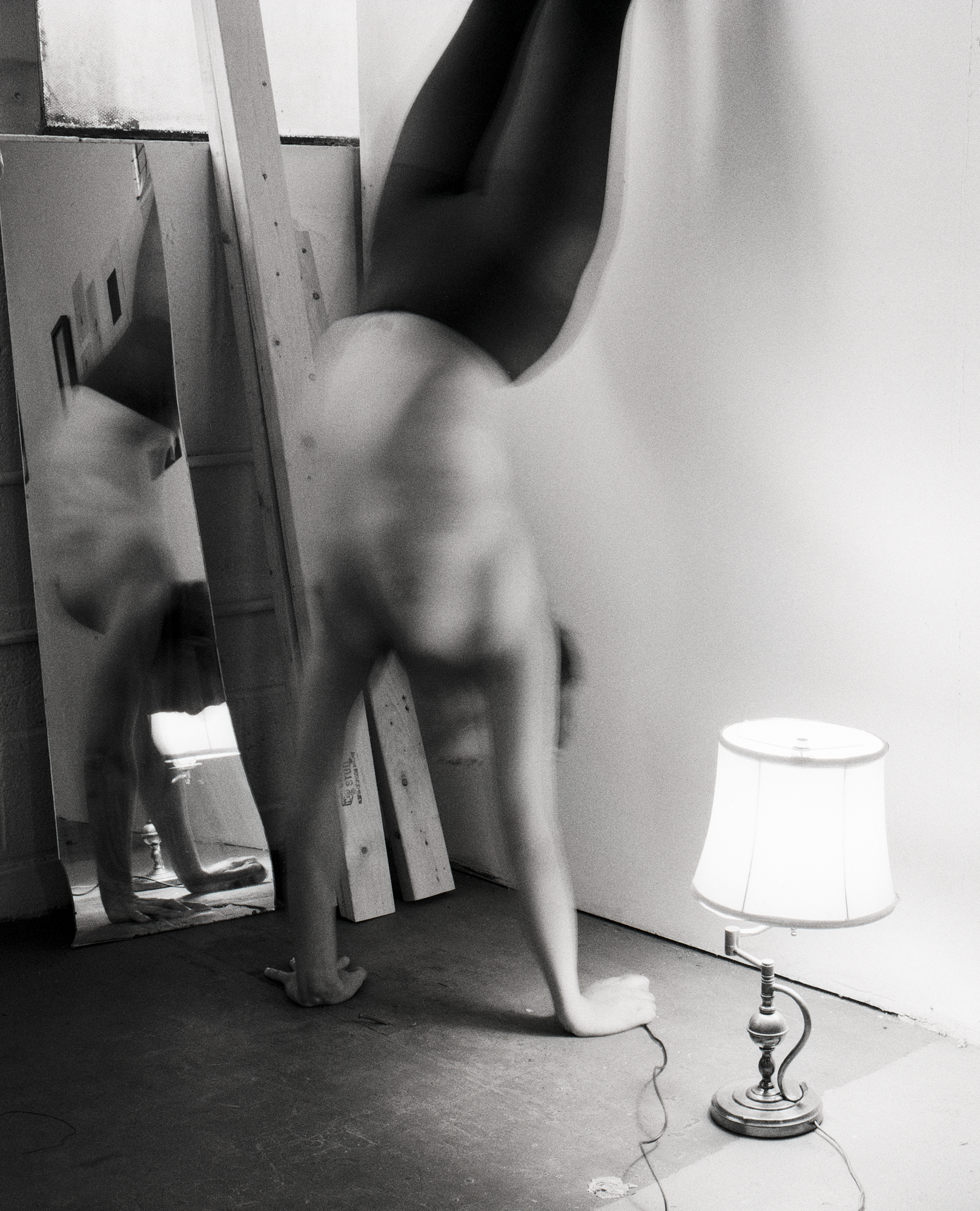
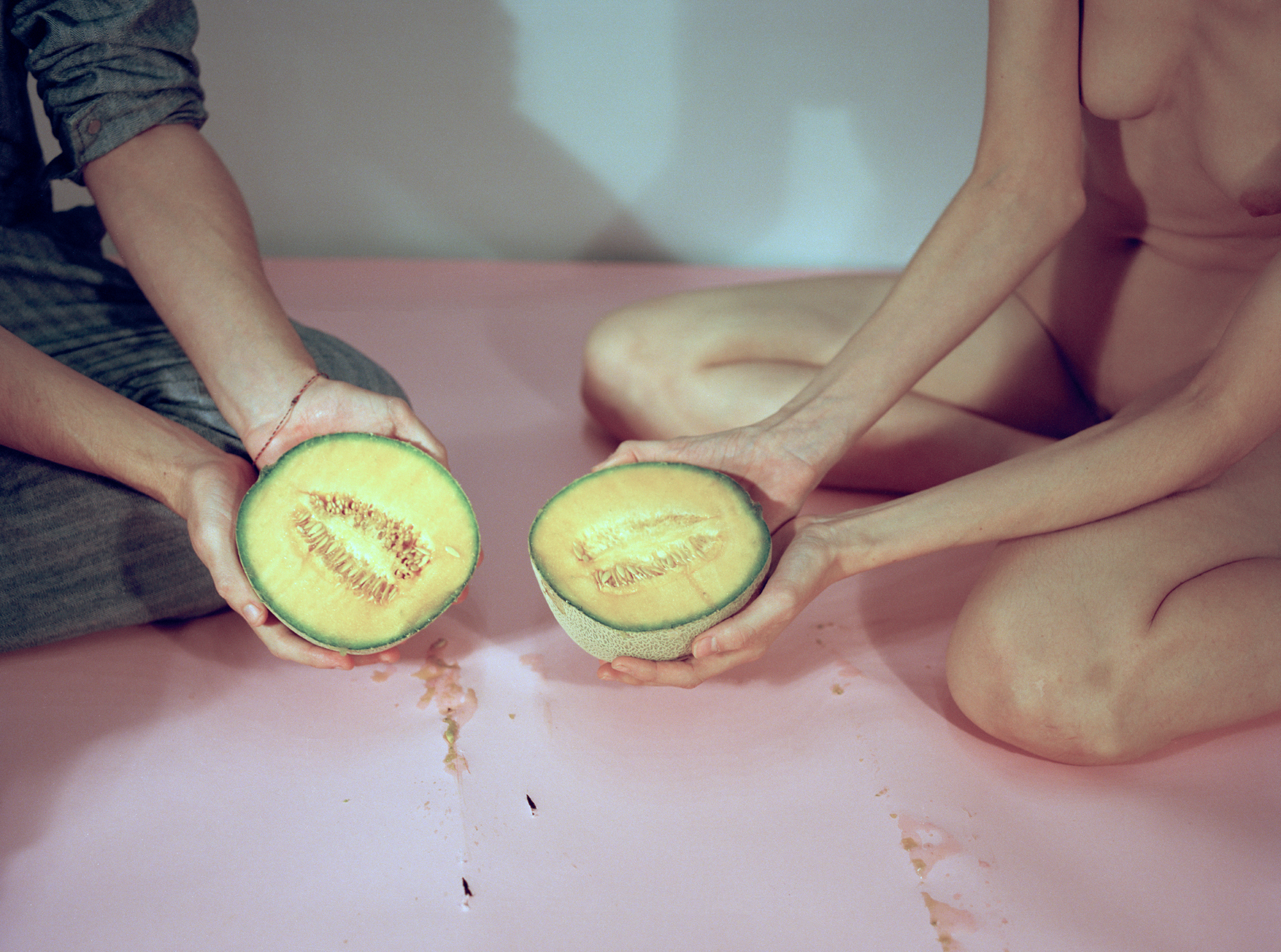
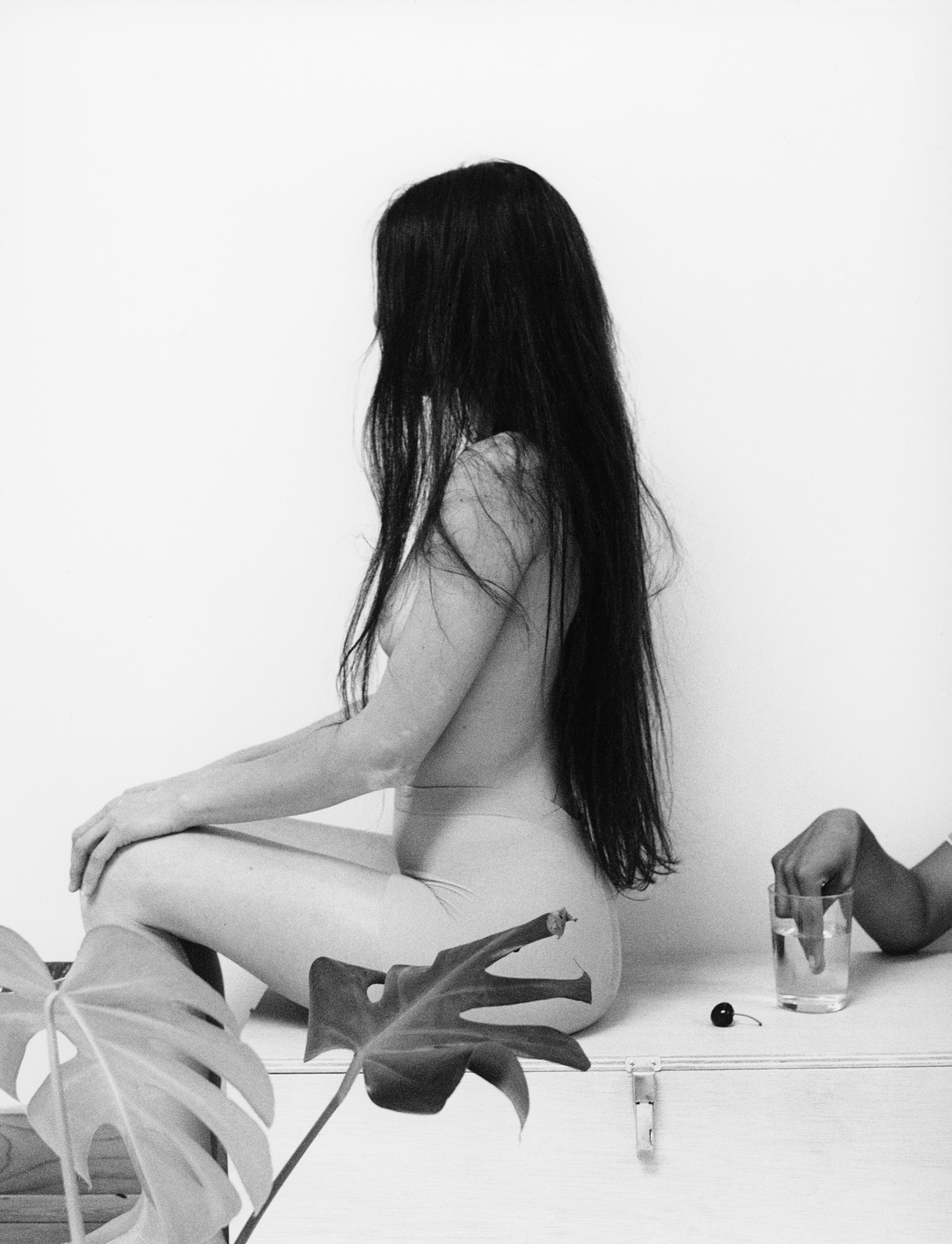

Afternoons is on display at Lubov NYC through November 22. You can purchase the book online, here.


